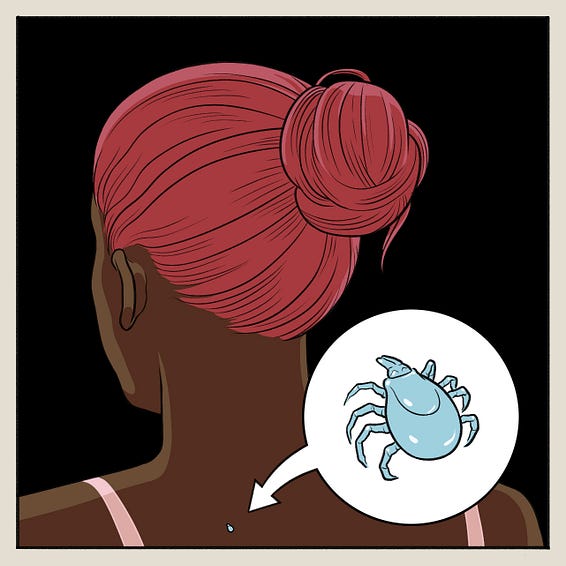Tickpocalypse
“Pandemic” isn’t a word responsible health experts toss around lightly. It refers to an infectious disease that’s run rampant—and it’s near the top of the list of major threats to human health. When pandemics occur, newshounds and public health officials jump on it, alerting the masses (albeit sometimes too slowly). When they don’t, pandemics continue to spread unabated. That’s what’s happening now, according to a growing cadre of experts, with Lyme disease.
The worldwide tick population is exploding, and with it, the incidence of Lyme. The number of confirmed cases of the illness in the U.S. more than doubled in the two decades leading up to 2017, and rose 17% from 2016 to 2017 alone. It’s estimated that 300,000 people contract Lyme each year in the U.S., with victims found not just in traditionally tick-heavy areas like upstate New York and Maine, but in all 50 states and Washington, D.C. Lyme is also on the rise in Europe, Africa, and Asia. If all of that isn’t troubling enough, other tick-borne illnesses, like Rocky Mountain Spotted Fever—which experts say is significantly more dangerous than Lyme—are also becoming much more widespread.
“Tickpocalypse,” the collection of stories that follows, documents these looming threats, and shows you how to protect yourself and your family. It’s an eye-opening, and hopefully helpful, report.
Tick, Tick, Tick...
An explosion in the tick population has triggered an epidemic of Lyme disease and a rise in other, scarier, tick-borne illnesses
What It’s Like to Have Lyme Disease Forever
The author has spent a decade fighting persistent Lyme disease symptoms — and convincing those who don't believe him that his illness is real
Worrying About Worrying About Lyme Disease
One mother reckons with her fear of the illness—and why it freaks us all out so much
know your enemy
A quick primer on the tick that transmits Lyme
The more than 800 species of ticks fall into one of three scientific families—Ixodidae (hard ticks, like the blacklegged, or deer, tick and the dog tick); Argasidae (soft ticks), and Nuttalliella, a single elusive species found in Sub-Saharan Africa. They are part of the order of Parasitiformes and the classification arachnid (although many varieties emerge as larvae with six legs and develop eight legs as nymphs). The blacklegged tick (Ixodes Scapularis) is the type that spreads Lyme disease, as well as other illnesses like relapsing fever and Powassan virus.
Adult female blacklegged ticks have a bright orange-red body, while adult males are dark brown to black. Even at their largest size, ticks are still very small—measuring between 3 and 5 millimeters long, or slightly larger than a sesame seed when mature. About 10 of them would fit on the face of a dime.
The blacklegged tick is typically found in the Northeast, Upper Midwest, and mid-Atlantic regions of the United States, with tick bites being most common during spring, summer, and fall. People who live in or frequent wooded or grassy areas are at the highest risk. Children who spend a lot of time outdoors in these environments are especially vulnerable, and should be carefully checked on a regular basis.
Ticks progress through four stages—egg, larvae, nymph, and adult. Ixodidae ticks typically live from one to two years; Argasidae can live as briefly as several months or as long as a dozen or more years.
What It’s Like To Be a Creepy-crawler Field Researcher
Meet the husband and wife tick hunters
When That Tick Bites



From birth to blood-sucking and beyond, how Ixodes Scapularis does its dirty work